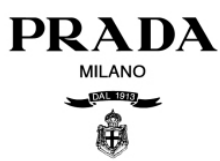
The Applicant, Rada Perfumery, applied to register the sign RADA PERFUMES (below) in the EU in classes 3 and 35, covering cosmetics, perfumes, essential oils, and advertising, marketing and retail services relating to perfumery, cosmetics and beauty products – full spec below.

- Class 3: ‘Cosmetics and cosmetic preparations; Perfume oils for the manufacture of cosmetic preparations; Perfume; Oils for perfumes and scents; Natural essential oils; Blended essential oils; Body deodorants [perfumery]; Synthetic perfumery; Perfumery’.
- Class 35: ‘Advertising services relating to perfumery; Marketing research in the fields of cosmetics, perfumery and beauty products; Preparing promotional and merchandising material for others; Providing consumer product advice relating to cosmetics; Online retail services relating to cosmetics; Mail order retail services for cosmetics; Wholesale services in relation to fragrancing preparations.’
Prada opposed the application on the basis of its below registrations for PRADA and PRADA MILANO, relying on likelihood of confusion (8(1)(b) and reputation (8(5)).


The OD upheld the opposition for all the class 3 goods of Rada Perfumery’s application and for the highlighted terms in class 35, on the likelihood of confusion ground. The opposition was rejected for the remaining terms in class 35.
Rada appealed against the OD’s decision, but the BOA dismissed the appeal on the ground that there was a likelihood of confusion.
Rada then appealed to the GC, contending that the GC should (a) annul the BOA’s decision, (b) reject the application and (c) grant registration of the applied-for mark.
An interesting practice point at (c) is that the GC held it was outside its jurisdiction to grant registration of the mark – may be something to consider when filing appeals, e.g., when asking which remedies are being sought.
The BOA held:
- There was no error in the BOA’s finding that the goods and services were identical. Rada tried to argue that factors such as composition, smell or packaging of the goods were relevant to the assessment but the GC confirmed that the test is the comparison of the goods/services as listed in the specifications – therefore, there was no error by the BOA.
- There was no error in the BOA’s finding on visual, aural and conceptual comparisons of the marks.
- On visual, a high degree of similarity was found between the plain PRADA marks and the application, and an average degree of similarity between PRADA MILANO DAL 1913 and the application.
- On phonetic, the GC held the BOA did not err in finding a high degree of phonetic similarity between the marks at issue.
- On conceptual, the GC held that Rada had not established in evidence that RADA is a common surname, and therefore that PRADA and RADA have no meaning for the relevant public. Interestingly the GC did take into account the non-distinctive elements in the conceptual comparison (para 55 – e.g., of PERFUMES in the application, and MILANO in Prada’s earlier mark) and held that overall, the marks were conceptually dissimilar.
The application to the GC was dismissed in its entirety.
This case raised the question that parties should consider when the use and register position of a trade mark differ significantly. The parties had co-existed in Romania for some time, with RADA even securing Romanian registrations without challenge from Prada. They operate a retail website selling perfumes under the RADA name. Their EUTM application planted them firmly in Prada’s sights.
The additional elements in the mark as filed and one of the earlier rights held by Prada came into play. They did not alter the end decision here but do demonstrate how important it is to carefully consider the mark you file.
Parties need to remember there is no right to register a name, you must give the same considerations to clearance of a name, as any other mark.
The case served as another reminder that new evidence cannot be introduced on appeal and the importance of evidencing key points, namely the co-existence of the marks and the apparent common nature of the later mark as a name.
Send us your thoughts:
Would you like to read more articles like this?
Building 1000
Cambridge Research Park
CB25 9PD
Fax. 01223 425258
info@iamstobbs.com
Privacy policy
German office legal notice
Cookie Declaration
Complaints Policy
Copyright © 2022 Stobbs IP
Registered Office: Building 1000, Cambridge Research Park, Cambridge, CB25 9PD.
VAT Number 155 4670 01.
Stobbs (IP) Limited and its directors and employees who are registered UK trade mark attorneys are regulated by IPReg www.ipreg.org.uk



